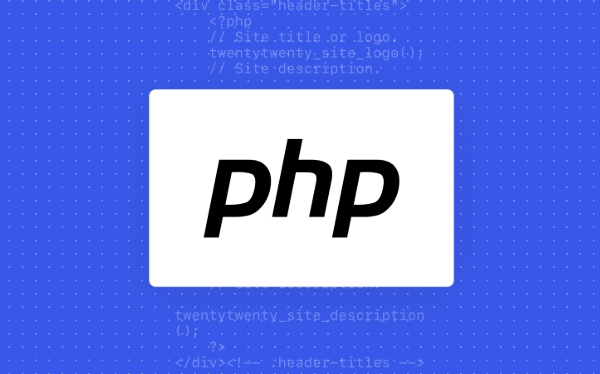To prevent session hijacking in PHP, the following measures must be taken: 1. Use HTTPS to encrypt the transmission and set session.cookie_secure=1 in php.ini; 2. Set the security cookie attributes, including httponly, secure and samesite; 3. Call session_regenerate_id(true) when the user logs in or permissions change to change to change the Session ID; 4. Limit the Session life cycle, properly configure gc_maxlifetime and record the user activity time; 5. Prohibit exposing the Session ID to the URL, and set session.use_only_cookies=1. These methods can effectively improve conversation security.

Preventing Session Hijacking in PHP is not actually complicated, but it does require some basic security awareness and configuration. Session hijacking mainly refers to an attacker stealing the user's session ID, thereby pretending to be a user for illegal operations. Here are some practical ways to reduce this risk.

1. Use HTTPS to encrypt the transmission of data
This is the most basic and important point. If the website does not use HTTPS, the session ID is likely to be intercepted by a man-in-the-middle attack in plaintext transmission.
- Make sure HTTPS is mandatory throughout the site.
- Set
session.cookie_secure = 1inphp.iniso that the browser will only send session cookies over HTTPS. - The security can be further enhanced with the HSTS (HTTP Strict Transport Security) header.
2. Set secure cookie attributes
The default session cookie setting of PHP is relatively loose, and we need to manually enhance its security.

You can set the following options in the code or modify php.ini :
-
session.cookie_httponly = 1: prevents XSS attacks from reading cookies. -
session.cookie_secure = 1: Only cookies are sent under HTTPS. -
session.cookie_samesite = StrictorLax: Prevent CSRF attacks.
It can also be set dynamically at runtime:

session_set_cookie_params([
'httponly' => true,
'secure' => true,
'samesite' => 'Strict'
]);3. Regularly change the Session ID
To prevent session fixation attacks, a new session ID should be generated after the user login is successful.
- Use
session_regenerate_id(true)to update the session ID and delete the old session file. - When permissions change (such as switching from a normal user to an administrator), it is also recommended to regenerate the session ID.
Although this step is simple, it can effectively cut off the effectiveness of the session ID obtained by the attacker in advance.
4. Limit the life cycle of the Session
By default, PHP sessions may be stored for a long time, which is a potential security risk.
You can make these adjustments:
- Set a shorter session expiration time:
-
session.gc_maxlifetime = 1440(unit is seconds, default is 24 minutes)
-
- At the same time, ensure that the garbage collection mechanism on the server is enabled and configured reasonably.
- The user's last activity time can be recorded at the application layer, and the session will be destroyed if there is no operation after a certain period of time.
5. Do not expose Session ID to URLs
Some old systems may splice the session ID on the URL, which is easy to leak.
- Make sure
session.use_only_cookies = 1is set inphp.ini. - Close
session.use_trans_sidto avoid PHP automatically adding session ID to the URL.
Basically these are the methods. It seems that there are many steps, but many can be done through simple configuration. The key is to cover all these details and don’t let the session ID be easily obtained.
The above is the detailed content of How to prevent session hijacking in PHP?. For more information, please follow other related articles on the PHP Chinese website!

Hot AI Tools

Undress AI Tool
Undress images for free

Undresser.AI Undress
AI-powered app for creating realistic nude photos

AI Clothes Remover
Online AI tool for removing clothes from photos.

Clothoff.io
AI clothes remover

Video Face Swap
Swap faces in any video effortlessly with our completely free AI face swap tool!

Hot Article

Hot Tools

Notepad++7.3.1
Easy-to-use and free code editor

SublimeText3 Chinese version
Chinese version, very easy to use

Zend Studio 13.0.1
Powerful PHP integrated development environment

Dreamweaver CS6
Visual web development tools

SublimeText3 Mac version
God-level code editing software (SublimeText3)

Hot Topics
 How to upgrade PHP version?
Jun 27, 2025 am 02:14 AM
How to upgrade PHP version?
Jun 27, 2025 am 02:14 AM
Upgrading the PHP version is actually not difficult, but the key lies in the operation steps and precautions. The following are the specific methods: 1. Confirm the current PHP version and running environment, use the command line or phpinfo.php file to view; 2. Select the suitable new version and install it. It is recommended to install it with 8.2 or 8.1. Linux users use package manager, and macOS users use Homebrew; 3. Migrate configuration files and extensions, update php.ini and install necessary extensions; 4. Test whether the website is running normally, check the error log to ensure that there is no compatibility problem. Follow these steps and you can successfully complete the upgrade in most situations.
 How do I prevent cross-site request forgery (CSRF) attacks in PHP?
Jun 28, 2025 am 02:25 AM
How do I prevent cross-site request forgery (CSRF) attacks in PHP?
Jun 28, 2025 am 02:25 AM
TopreventCSRFattacksinPHP,implementanti-CSRFtokens.1)Generateandstoresecuretokensusingrandom_bytes()orbin2hex(random_bytes(32)),savethemin$_SESSION,andincludetheminformsashiddeninputs.2)ValidatetokensonsubmissionbystrictlycomparingthePOSTtokenwiththe
 PHP beginner guide: Detailed explanation of local environment configuration
Jun 27, 2025 am 02:09 AM
PHP beginner guide: Detailed explanation of local environment configuration
Jun 27, 2025 am 02:09 AM
To set up a PHP development environment, you need to select the appropriate tools and install the configuration correctly. ①The most basic PHP local environment requires three components: the web server (Apache or Nginx), the PHP itself and the database (such as MySQL/MariaDB); ② It is recommended that beginners use integration packages such as XAMPP or MAMP, which simplify the installation process. XAMPP is suitable for Windows and macOS. After installation, the project files are placed in the htdocs directory and accessed through localhost; ③MAMP is suitable for Mac users and supports convenient switching of PHP versions, but the free version has limited functions; ④ Advanced users can manually install them by Homebrew, in macOS/Linux systems
 How to combine two php arrays unique values?
Jul 02, 2025 pm 05:18 PM
How to combine two php arrays unique values?
Jul 02, 2025 pm 05:18 PM
To merge two PHP arrays and keep unique values, there are two main methods. 1. For index arrays or only deduplication, use array_merge and array_unique combinations: first merge array_merge($array1,$array2) and then use array_unique() to deduplicate them to finally get a new array containing all unique values; 2. For associative arrays and want to retain key-value pairs in the first array, use the operator: $result=$array1 $array2, which will ensure that the keys in the first array will not be overwritten by the second array. These two methods are applicable to different scenarios, depending on whether the key name is retained or only the focus is on
 How to use php exit function?
Jul 03, 2025 am 02:15 AM
How to use php exit function?
Jul 03, 2025 am 02:15 AM
exit() is a function in PHP that is used to terminate script execution immediately. Common uses include: 1. Terminate the script in advance when an exception is detected, such as the file does not exist or verification fails; 2. Output intermediate results during debugging and stop execution; 3. Call exit() after redirecting in conjunction with header() to prevent subsequent code execution; In addition, exit() can accept string parameters as output content or integers as status code, and its alias is die().
 Applying Semantic Structure with article, section, and aside in HTML
Jul 05, 2025 am 02:03 AM
Applying Semantic Structure with article, section, and aside in HTML
Jul 05, 2025 am 02:03 AM
The rational use of semantic tags in HTML can improve page structure clarity, accessibility and SEO effects. 1. Used for independent content blocks, such as blog posts or comments, it must be self-contained; 2. Used for classification related content, usually including titles, and is suitable for different modules of the page; 3. Used for auxiliary information related to the main content but not core, such as sidebar recommendations or author profiles. In actual development, labels should be combined and other, avoid excessive nesting, keep the structure simple, and verify the rationality of the structure through developer tools.
 How do I access session data in PHP?
Jun 30, 2025 am 01:33 AM
How do I access session data in PHP?
Jun 30, 2025 am 01:33 AM
To access session data in PHP, you must first start the session and then operate through the $_SESSION hyperglobal array. 1. The session must be started using session_start(), and the function must be called before any output; 2. When accessing session data, check whether the key exists. You can use isset($_SESSION['key']) or array_key_exists('key',$_SESSION); 3. Set or update session variables only need to assign values ??to the $_SESSION array without manually saving; 4. Clear specific data with unset($_SESSION['key']), clear all data and set $_SESSION to an empty array.
 What are recursive functions in PHP?
Jun 29, 2025 am 02:02 AM
What are recursive functions in PHP?
Jun 29, 2025 am 02:02 AM
Recursive functions refer to self-call functions in PHP. The core elements are 1. Defining the termination conditions (base examples), 2. Decomposing the problem and calling itself recursively (recursive examples). It is suitable for dealing with hierarchical structures, disassembling duplicate subproblems, or improving code readability, such as calculating factorials, traversing directories, etc. However, it is necessary to pay attention to the risks of memory consumption and stack overflow. When writing, the exit conditions should be clarified, the basic examples should be gradually approached, the redundant parameters should be avoided, and small inputs should be tested. For example, when scanning a directory, the function encounters a subdirectory and calls itself recursively until all levels are traversed.






